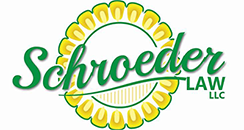Traditionally American families had a safety deposit box, often called a lockbox. Lockboxes were physical, metal-box drawers in locked vaults or at local banks.
Many families kept important documents and heirlooms in their lockboxes. Families would also store some monetary proceeds in lockboxes with their important documents.
Lockboxes were a major focus for taxing authorities in Ohio before 2013, when Ohio still had an estate tax. As a result, Ohio law dictated a process for opening lockboxes when its owner died.
Traditionally, almost every American family had a safety deposit box, often called a lockbox. Lockboxes were usually physical, metal-box drawers in locked vaults at local banks. Annual rents were paid by owners of lockboxes to the hosting banks in exchange for the safety from theft, fire and flood that the lockboxes provided.
Lockboxes were where family members kept important papers like deeds, wills and other documentary family heirlooms, including passports and immigration paperwork. Typically, also, families would store at least some monetary proceeds that were represented by physical paper (currency and savings bonds, for example) in lockboxes.
Read more about safety deposit box law in Ohio here: Legal-Ease: Safety deposit box law in Ohio
Source: LimaOhio.com, “Legal-Ease: Safety deposit box law in Ohio,” by Lee R. Schroeder, December 8, 2018
Lee R. Schroeder is an Ohio licensed attorney at Schroeder Law LLC in Putnam County. He limits his practice to business, real estate, estate planning and agriculture issues in northwest Ohio. He can be reached at Lee@LeeSchroeder.com or at 419-659-2058. This article is not intended to serve as legal advice, and specific advice should be sought from the licensed attorney of your choice based upon the specific facts and circumstances that you face.
